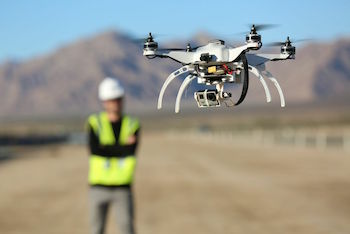 Some sources believe that there were one million drones sold last year. According to those sources, up to 40% of those drones are being used in the construction and infrastructure industries.
Some sources believe that there were one million drones sold last year. According to those sources, up to 40% of those drones are being used in the construction and infrastructure industries.
According to a recent post on Construction Dive, the long awaited FAA drone rules for the commercial use of drones weighing up to 55 pounds aimed at bringing some order to the “pre Jetson” skies have been released.
The construction and infrastructure industries are the largest commercial users of these drones. The commercial use of drones for surveying, remote sensing, progress photos, pipeline inspection, site and emergency inspections in hazardous areas has already proven that drones can provide a much needed tool and that they will be around for years to come.
Generally, the preliminary FAA rules are relatively straightforward.
They include:
- Must be flown during daylight hours
- Must be flown in the operator’s line of sight
- 400 foot maximum altitude
- Must have anti-collision lights
- Operators must be older than 16
- Operators must pass a written test every two years, have a remote pilot’s certificate and have a background check
- Operators must do pre-flight check, but no FAA airworthiness certificate is required
- Drones cannot be flown over people unless they are part of the operation and covered by a structure or vehicle
The FAA will consider exceptions on a “case by case” basis and so far the top three states where exemptions have been submitted, according to Forconstructionpros.com, are:
Florida-192
California-191
Texas-166
While these rules are preliminary and will not become effective until 60 days after their filing in the Congressional Record, they do offer long awaited guidelines that many construction companies have been asking for. The FAA will issue additional rules as the infant industry grows into maturity and the unintended consequences of the proposed rules emerge.
There are companies like Amazon that are not too happy about some of the aspects of these rules. Amazon and some of its peers, who anticipate using drones for faster delivery of packages, are not fond of the line of sight requirements and will likely be pushing for further review and exemptions.
In the meantime, you can expect to see drones on both your commercial and residential build sites as contractors, developers and even lenders begin to use this new tool for great accuracy and schedule improvements.


